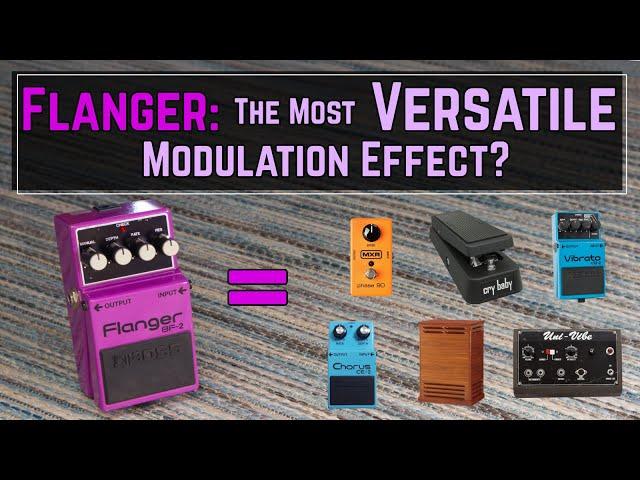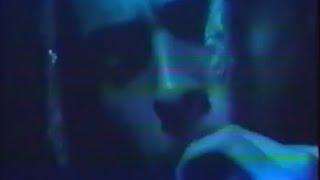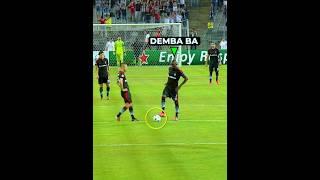
How To Get 6 Modulation Effects From a Basic Flanger Pedal Like The Boss BF-2
How to get the most from your flanger pedal. A basic analogue flanger pedal like the Boss BF-2 or the MXR M117 is actually the most versatile type of modulation effect there is.
MXR M117r
USA: https://www.sweetwater.com/store/detail/M117R--mxr-m117r-flanger-pedal
UK: https://amzn.to/3Lm0Q5O
Boss BF-3 (updated digital version of BF-2)
USA: https://amzn.to/3vPmCYW
UK: https://www.andertons.co.uk/boss-bf-3-flanger-pedal
TC Electronic Thunderstorm Flanger
USA: https://amzn.to/3LoXzCK
UK: https://amzn.to/3LoXBdQ
I got a lot of inspiration for this video from this excellent article https://reverb.com/news/the-flanger-your-most-versatile-modulator
With a deeper understanding of the controls you can get chorus, phaser, rotary speaker, uni-vibe, vibrato and even auto-wah type sounds all out of one simple analogue pedal. Now I know there are digital multi effects that can do lots of different modulation sounds all from one pedal but there is real joy in taking a simple old school analogue flanger pedal and exploring how creative and resourceful you can actually be with just that one effect.
The flanger sound comes from when in a studio, two tape machines were playing the same music and someone press' their finger on the flange of one of those tape machines to manually slow it down, the harder they press, the more it slows down and the more it would drop in pitch, when they released their finger that tape machine would speed back up and the pitch would raise and that’s what creates the traditional flanger sound.
Manual is delay time, longer to the left and shorter to the right. This is basically how in or out of sync the two tape machines would be.
Depth or width is how wide the sweep is. That’s how hard the finger would be pressed on the flange of one of the tape machines. Rate is the speed of the modulation so that’s how fast or how often the finger would be pressing on the flange of one of the tape machines. The resonance, feedback or regeneration control feeds the delayed signal back to the input, which intensifies the flanging effect as it's turned up.
For the standard Flanger swoosh; all controls at about noon except maybe the resonance which you can crank up a bit.
For chorus sounds set the resonance very low to reduce the intense flange sound. Set manual (this is the delay time) very low, because chorus usually has a longer delay time than flangers, we want it set long to get away from the comb filter sound that a shorter delay gives, the longer delay sounds more like two signals overlaid onto of each other which is what we want for chorus. Depth set fairly low, flangers can get really wide and extreme in how much they alter the pitch, we want a fairly subtle smooth sweep for a more traditional chorus sound. Rate can be set to taste.
For a rotary speaker type sound you can use mostly the same settings that we used for chorus but increase the depth for a wider sweep.
Now if you raise the manual control to shorten the delay time it gets into more of a phasing type sound which is similar to a uni-vibe. It doesn’t quite have the full throb of a real uni vibe but it will get you close.
If you crank both the depth and rate controls you can get a pretty good vibrato pedal type sound, I like using this setting to highlight certain notes and only have it on momentarily.
Now if you raise the manual control so there’s only a very short delay time it creates more of a phasing sound because the the original signal is so close to the sound of the modulated signal. It just sounds very similar to phasing with a more shimmery thinner sound that a phaser has.
You can move away from the phasing sound and more towards an auto wah sound by backing off the manual and depth controls and then raising the resonance control and you get more of a fluctuation in tone instead of pitch. The more you raise that resonance control the more it will start to blend with the more traditional flanging sounds.
Remember it doesn’t have to be the Boss BF-2 that you use to get these sounds. Any decent flanger pedal with those four main controls will do.
Timecodes:
00:00 - Intro
01:16 - What Actually is the Flanger Effect?
02:10 - Controls Explained
02:55 - Standard Flanger 'swoosh'
03:27 - Chorus
05:57 - Rotary Speaker
07:29 - Uni-Vibe
09:03 - Vibrato
10:28 - Phaser
12:22 - Auto Wah
13:57 - Sci-Fi Synth
MXR M117r
USA: https://www.sweetwater.com/store/detail/M117R--mxr-m117r-flanger-pedal
UK: https://amzn.to/3Lm0Q5O
Boss BF-3 (updated digital version of BF-2)
USA: https://amzn.to/3vPmCYW
UK: https://www.andertons.co.uk/boss-bf-3-flanger-pedal
TC Electronic Thunderstorm Flanger
USA: https://amzn.to/3LoXzCK
UK: https://amzn.to/3LoXBdQ
I got a lot of inspiration for this video from this excellent article https://reverb.com/news/the-flanger-your-most-versatile-modulator
With a deeper understanding of the controls you can get chorus, phaser, rotary speaker, uni-vibe, vibrato and even auto-wah type sounds all out of one simple analogue pedal. Now I know there are digital multi effects that can do lots of different modulation sounds all from one pedal but there is real joy in taking a simple old school analogue flanger pedal and exploring how creative and resourceful you can actually be with just that one effect.
The flanger sound comes from when in a studio, two tape machines were playing the same music and someone press' their finger on the flange of one of those tape machines to manually slow it down, the harder they press, the more it slows down and the more it would drop in pitch, when they released their finger that tape machine would speed back up and the pitch would raise and that’s what creates the traditional flanger sound.
Manual is delay time, longer to the left and shorter to the right. This is basically how in or out of sync the two tape machines would be.
Depth or width is how wide the sweep is. That’s how hard the finger would be pressed on the flange of one of the tape machines. Rate is the speed of the modulation so that’s how fast or how often the finger would be pressing on the flange of one of the tape machines. The resonance, feedback or regeneration control feeds the delayed signal back to the input, which intensifies the flanging effect as it's turned up.
For the standard Flanger swoosh; all controls at about noon except maybe the resonance which you can crank up a bit.
For chorus sounds set the resonance very low to reduce the intense flange sound. Set manual (this is the delay time) very low, because chorus usually has a longer delay time than flangers, we want it set long to get away from the comb filter sound that a shorter delay gives, the longer delay sounds more like two signals overlaid onto of each other which is what we want for chorus. Depth set fairly low, flangers can get really wide and extreme in how much they alter the pitch, we want a fairly subtle smooth sweep for a more traditional chorus sound. Rate can be set to taste.
For a rotary speaker type sound you can use mostly the same settings that we used for chorus but increase the depth for a wider sweep.
Now if you raise the manual control to shorten the delay time it gets into more of a phasing type sound which is similar to a uni-vibe. It doesn’t quite have the full throb of a real uni vibe but it will get you close.
If you crank both the depth and rate controls you can get a pretty good vibrato pedal type sound, I like using this setting to highlight certain notes and only have it on momentarily.
Now if you raise the manual control so there’s only a very short delay time it creates more of a phasing sound because the the original signal is so close to the sound of the modulated signal. It just sounds very similar to phasing with a more shimmery thinner sound that a phaser has.
You can move away from the phasing sound and more towards an auto wah sound by backing off the manual and depth controls and then raising the resonance control and you get more of a fluctuation in tone instead of pitch. The more you raise that resonance control the more it will start to blend with the more traditional flanging sounds.
Remember it doesn’t have to be the Boss BF-2 that you use to get these sounds. Any decent flanger pedal with those four main controls will do.
Timecodes:
00:00 - Intro
01:16 - What Actually is the Flanger Effect?
02:10 - Controls Explained
02:55 - Standard Flanger 'swoosh'
03:27 - Chorus
05:57 - Rotary Speaker
07:29 - Uni-Vibe
09:03 - Vibrato
10:28 - Phaser
12:22 - Auto Wah
13:57 - Sci-Fi Synth
Тэги:
#flanger #flanger_pedal #flanger_effect #flanger_vs_phaser #flanger_vs_chorus #flanger_guitar_pedal #flanger_sound_effect #guitar_pedals #guitar_effects #boss_flanger #boss_bf2 #boss_bf-2 #boss_bf-2_flanger #boss_bf2_vs_bf3 #bossbf3 #boss_bf-3 #mxr_m117 #mxr_m117r #mxr_m117_flanger #versatile_guitar_effect #chorus_pedal #phaser_pedal #univibe_pedal #multi_effects_pedal #analogue_flanger #analog_flanger #best_flanger_pedal #how_to_use_flanger_pedal #understanding_flangerКомментарии:
TAIWAN: Taipei City, Shifen, and Jiufen
Joe Goes Far!
징크와 건축외장이야기 1 - 징크란 무엇인가 ?
선이 인터내셔날
Jeune Loup - Headlocc
Touchemoipas.100k


























